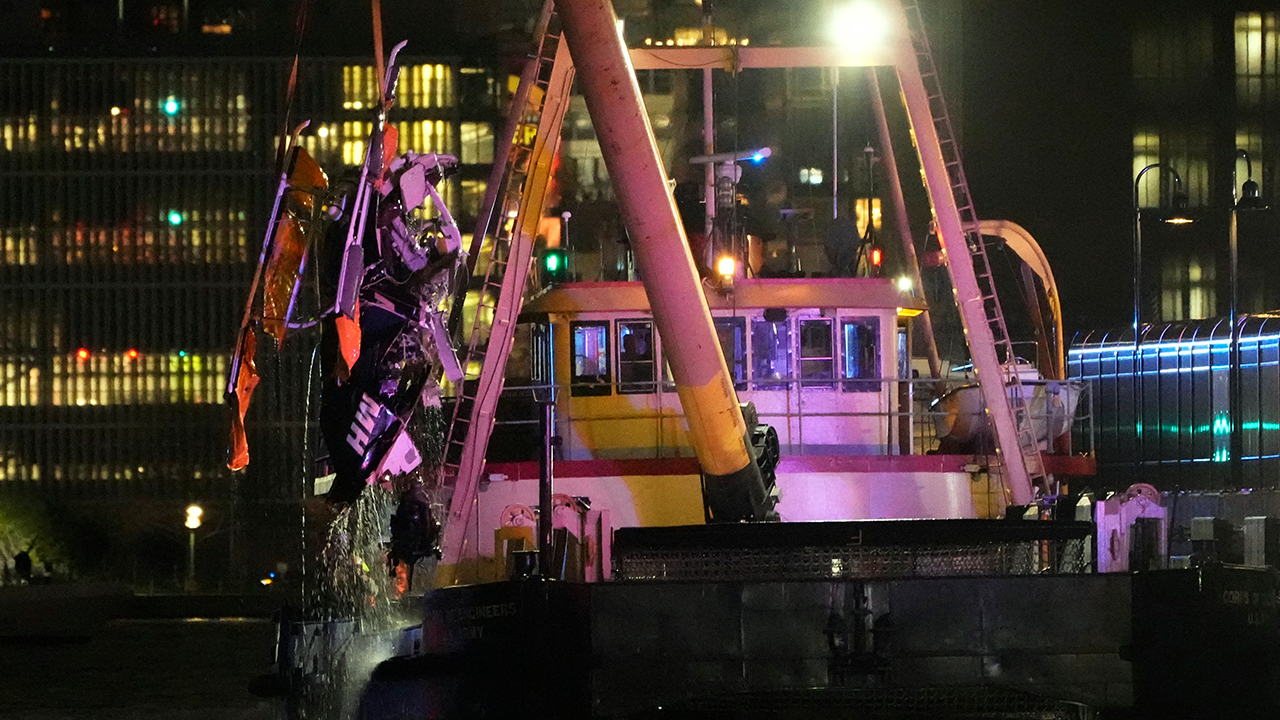Experts break down why smoke from Canadian wildfires are causing hazardous air quality in US

NEW YORK CITY (WABC) -- Intense Canadian wildfires are blanketing the northeastern U.S. in a dystopian haze, turning the air acrid, the sky yellowish gray and prompting warnings for vulnerable populations to stay inside.
The effects of hundreds of wildfires burning across the western provinces to Quebec could be felt as far away as New York City and New England, blotting out skylines and irritating throats.
U.S. authorities issued air quality alerts. Hazy conditions and smoke from the wildfires were reported across the Great Lakes region from Cleveland to Buffalo.
A smoky haze that hung over New York City much of the day Tuesday thickened in the late afternoon, obscuring views of New Jersey across the Hudson River and making the setting sun look like a reddish orb. In the Philadelphia area, dusk brought more of a lavender haze.
Sal and Lilly Murphy, of Brooklyn, likened the burning scent to a campfire. They said they could even smell the smoke indoors, in a Manhattan restaurant, then walked outside and saw a sky that looked like it was about to storm - but was rainless. Lilly wore a mask for protection.
"It's a little scary," Sal Murphy said.
Smoke from the fires has wafted through northeast U.S. states for weeks now, but it's only recently been noticeable in most places.
New York Gov. Kathy Hochul said Tuesday's hazy skies "were hard to miss," and New York City Mayor Eric Adams encouraged residents to limit outdoor activities "to the absolute necessities."
The National Weather Service has issued an Air Quality Alert for New York City and part of the Tri-State area with residents experiencing the worst air quality in the world on Tuesday.
Wednesday morning New York saw a minimal improvement falling second to Delhi, India.
City health officials are urging residents to limit outdoor activities as air quality is expected to remain at "unhealthy" to "very unhealthy" levels with no improvements until Thursday at the earliest.
What's Happening?
Smoke from Canada's wildfires has been moving into the United States since last month. The most recent fires near Quebec have been burning for at least several days.
The U.S. Environmental Protection Agency said hazy skies, reduced visibility and the odor of burning wood are likely, and that the smoke will linger for a few days in northern states.
"It's not unusual for us to get fire smoke in our area. It's very typical in terms of northwest Canada," said Darren Austin, a meteorologist and senior air quality specialist with the Rhode Island Department of Environmental Management. But, usually, the smoke has been aloft and hasn't affected people's health, he said.
The Quebec-area fires are big and relatively close, about 500 to 600 miles (roughly 800 to 970 kilometers) away from Rhode Island. More than 8.7 million acres (an area larger than the state of Vermont) have burned.
RELATED | Canada wildfire status tracker
Jay Engle, a National Weather Service meteorologist based in Upton, Long Island, said the wind trajectory that allowed smoke and hazy conditions to be seen in the New York City area could continue for the next few days. Of course, he said, the main driver of conditions is the fires themselves. If they diminish, the haze would too.
Experts at Environmental Canada said that they expect more frequent fires due to climate change, which could result in a doubling of the amount of area burned by the end of this century.
What's the biggest concern?
Air quality alerts are triggered by a number of factors, including the detection of fine-particle pollution - known as "PM 2.5" - which can irritate the lungs.
"We have defenses in our upper airway to trap larger particles and prevent them from getting down into the lungs. These are sort of the right size to get past those defenses," said Dr. David Hill, a pulmonologist in Waterbury, Connecticut, and a member of the American Lung Association's National Board of Directors. "When those particles get down into the respiratory space, they cause the body to have an inflammatory reaction to them."
Trent Ford, the state climatologist in Illinois, said the atmospheric conditions in the upper Midwest creating dry, warm weather made it possible for small particulates to travel hundreds of miles from the Canadian wildfires and linger for days.
"It's a good example of how complex the climate system is but also how connected it is," Ford said.
Dr. Mangala Narasimhan, SVP, Critical Care Services, Northwell said that smoke in the air "affects lots of different parts of your lungs. It causes you irritation, it causes people to cough, it causes difficulty breathing because the air is so heavy."
People with underlying lung diseases such as COPD, emphysema, or asthma should take extra caution.
Air Quality Tracker | ABC7 Air Quality Tracker
Additional reporting by the Associated Press
----------
* Get Eyewitness News Delivered
* Download the abc7NY app for breaking news alerts Submit a News Tip







